
ON THE COVER


ON THE COVER
The mission of KRNL Lifestyle + Fashion is to promote the individuality, creativity and uniqueness of storytelling by University of Kentucky’s students utilizing all of our publishing platforms.
KRNL Lifestyle + Fashion strives to bring awareness to the stories that inspire us — through art, human interest, enterprise, investigative, health and well-being or recreation — on and around campus and throughout our community.
Whether through words or pictures, our diverse staff invites, welcomes and embraces all perspectives, allowing us to bring to life a variety of stories that we want to tell.
Produced and distributed in the fall and spring semesters on the campus of the University of Kentucky and throughout the city of Lexington, KRNL Lifestyle + Fashion aspires to be an important voice for our community.

Like so many that have come before me, I fell in love the moment I picked up my first KRNL as an incoming freshman. I had hoped that one day I would be able to be a part of it, and now, as a senior and the editor-in-chief of KRNL, I hope to share that passion with you.
Through this magazine, I hope you can feel the dedication, creativity and love that every member of our team has put into it.
Each page you turn represents hours of work, from the makeup to the stories to the design. From “Girlmates” to stories on the current Miss Kentucky and the first Black woman chief of staff for the state, this particular issue has a common theme of the power of womanhood. This issue hopes to uplift and illuminate stories of women who broke barriers, stereotypes and the battles of life — something anyone can find relatability in. KRNL is for everyone, and in each page, I truly believe you will feel the amount of personalities, talents and people that made this issue come to life.

As I stepped into this role, I wanted to ensure that every team that makes up KRNL was being poured into, from podcast to the blog to video to our social media. KRNL is more than just the magazine you are holding, and I encourage you to tune into the content we release the other 363 days out of the year.
As for the two days that we do launch this magazine — one of them being today — I hope you find some joy, inspiration and passion from what KRNL does as well. This magazine is a product of us, but it is also a product that we make for you.
Yes, you. Our readers at KRNL push us to create the best magazine we can, and with every issue, we hope




DECKED OUT
Skateboarding fashion with statement pieces.
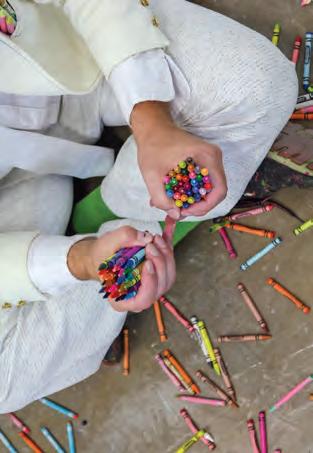
AN ARTIST’S RETURN TO CRAYONS
Brian Connors Manke embraces childlike freedoms by melting, drawing and painting with crayons to create canvas art pieces.
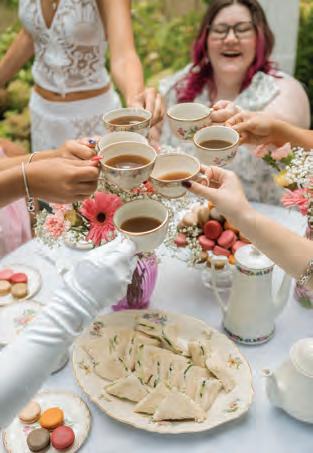
ART OF THE AFTERNOON
You are invited to a charming tea party to celebrate KRNL’s seniors.
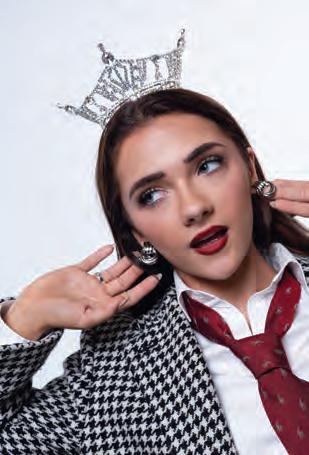
48
HOMELESS AT 16, CROWNED AT 20: MEET ARIANA RODRIGUEZ, MISS KENTUCKY
From foster care and homelessness to Miss Kentucky, Ariana Rodriguez transformed adversity into opportunity, using her platform to uplift foster youth.
8
SERVE HUMBLY, LIVE JOYFULLY AND BATTLE FIERCELY: FROM FIGHTING CANCER TO FINDING PURPOSE
Ella Ferris overcame a brain tumor at 15 years old, and through it, she has found her purpose to serve others and live fearlessly.

La Tasha Buckner’s journey from a smalltown in Kentucky to breaking barriers as the first Black woman to serve as both chief of staff and general counsel for the governor. 64
12
A SOLDIER’S LEGACY, A NIECE’S JOURNEY
A chance to study abroad brings a young Kentuckian woman to Normandy, where she visits her uncle’s grave for the first time.

Early morning fishing paired with cozy fashion.
24
ON TARGET: FROM OLYMPIC SHOOTING TO BREAKING MENTAL HEALTH BARRIERS
Sofia Ceccarello moved from Ravenna, Italy, where she shot the 10-meter air rifle for her country at the Tokyo 2021 Olympics to the University of Kentucky, and it has changed more than her geographic location.
30 44 56
WORK SUCKS, BUT PASSION PAYS (KIND OF)
A look at four side hustlers in the city of Lexington, which explores what it means to work and have passions.
After devastating flooding hit Hazard, Kentucky, the “magic” of the community helped to heal each other’s businesses.
A glimpse into the lives and bonds of girl roommates.

WRITTEN BY AIMEE PIERCE | PHOTOS BY LILY FOSTER & CHRISTIAN KANTOSKY
At 12 years old, Ella Ferris knew there was something wrong. While watching TV, she would have to close one eye just to get the double vision to subside, but the migraines and dizziness persisted. Ferris visited multiple doctors to determine the cause of the issue but was left with zero answers.
“Doctors kind of just downplayed it and told me that I was going through puberty and it was normal,” Ferris said.
Two years later, while trying out for her high school dance team as a freshman, she felt like something was still off.
“My thought process was so altered in a way, like it wasn’t very meaningful,” Ella said.
The optometrist suggested that they run a test of her optic nerve, but at first, she and her mom decided to decline. It wasn’t until the optometrist offered to pay for the test herself that they complied.
The test results revealed papilledema, the swelling of the optic nerve at the back of the eye usually caused by increased pressure inside the skull, and the optometrist called the retinal specialist right away for a next-day appointment.
“There were so many people that helped save Ella’s life, and the very first person was that optometrist at LensCrafters,” Ella’s mom, Kellie Ferris, said.
Following an emergency MRI, they waited for the results. When they pressed for an answer to the test, Kellie finally got a call from the retinal specialist.
A malignant tumor on her brain stem was so severe, doctors told her, “We don’t know how you’re alive right now.”


What once seemed like a far-off reality, Ella Ferris stands on the University of Kentucky’s campus, cancerfree, on Friday, Sept. 12, 2025, in Lexington, Ky.



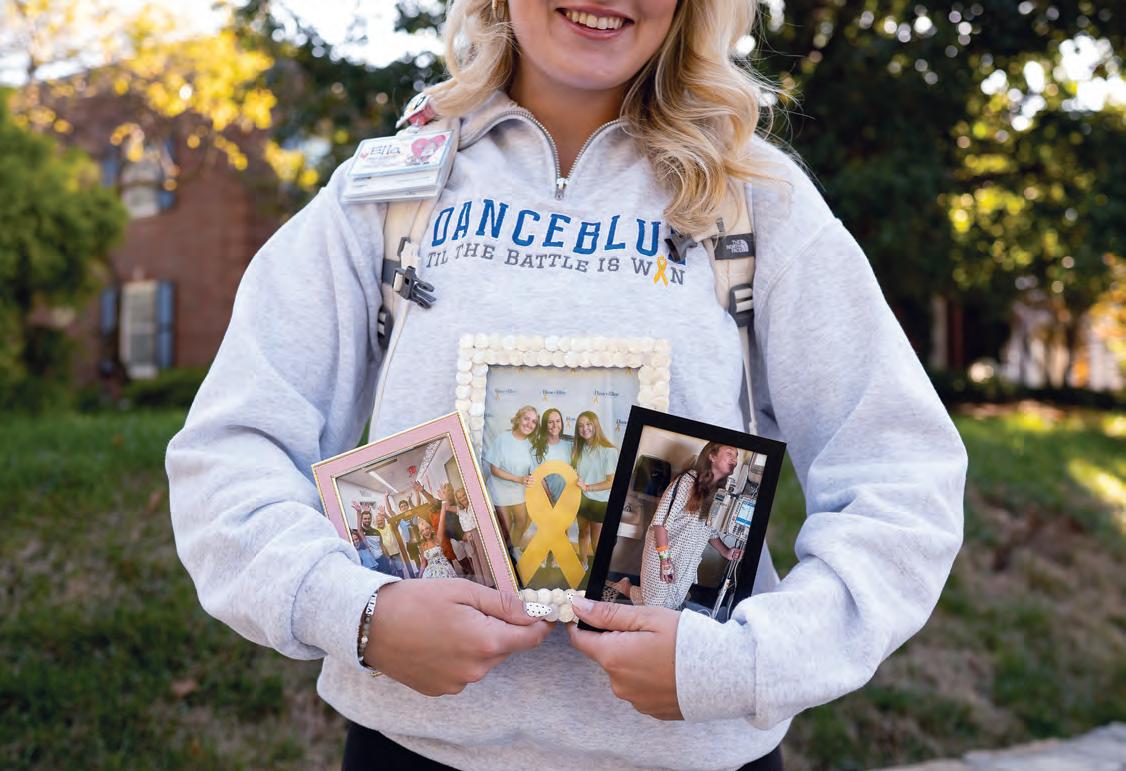
They took off to Cincinnati Children’s Hospital, unaware of when or in what state they would return home.
“That was the worst moment of my life,” Kellie said. “I mean, she just finished eighth grade. She was still little to me. So it was, it was rough.”
Ella was diagnosed with hydrocephalus, which happens when fluid in the brain cannot drain like it’s supposed to. Her brain tumor had grown in a spot where it blocked the drainage, so the fluid was building up, making her head swell dangerously.
By the time she got to the hospital, doctors said she could have died at any moment.
What surprised them was how OK she looked. From the outside, Ella looked normal with little to no external swelling. Throughout the first couple of hours, doctors from different departments kept coming in. Not just to help, but because they had heard about her and couldn’t believe how normal she seemed.
According to Kellie, one doctor even said, “How you look sitting in that bed does not match what we see on your MRI.”
In a matter of days, Ella’s whole life was flipped upside down. From dancing in her room happily to spending nights in a hospital bed, realizing it’s a miracle she’s alive.
While she was trying to process everything, her parents were right by her side in shifts, driving back and forth between Georgetown, Kentucky, and Cincinnati Children’s Hospital to make sure she was never alone during treatment, even throughout COVID-19 isolation.
“ I feel like I want to serve others with, being humble, being grateful. But I also want to live with joy. I want when people think ‘Ella Ferris’ to think of joy, truthfully.”
- ELLA FERRIS UK STUDENT
Since she was a fall risk and wasn’t allowed to walk on her own, her family would push her around on the oncology floor in a wheelchair, making her feel loved even with the circumstances.
“I couldn’t deal with my own emotions with her. She was 13 years old. She was the priority,” Kellie said. “I had to shove it down.”
One moment Ella will never forget was watching the fireworks from her hospital window on the Fourth of July, just one day after her surgery.
“I remember sitting with my dad, and I couldn’t even hear them — they were so far away,” she said. “Now, every Fourth of July, I’m just so thankful I can hear them. It reminds me I’m still here.”
Through it all, she’s tried to change her narrative.
“I don’t want my story to be a sob story. I want it to be about joy and triumph,” Ella said.
Today, Ella serves on DanceBlue’s family relations committee and hopes to one day become a pediatric oncology nurse.
“ I don’t want my story to be a sob story. I want it to be about joy and triumph.”
- ELLA FERRIS UK
STUDENT
“I’m so blessed and so grateful for how my life has played out. I have the opportunity to speak for these kids and walk for these kids, because at one point, I was that kid,” Ella said.
On July 3, five years after her diagnosis, Ella finally stood in the hallway she had dreamed about for so long. With her family, friends, patients and nurses lining the hall, clapping and cheering for her, she turned the corner and saw the bell that signifies five years of remission. Reaching it was something she had imagined countless times, but didn’t know if the day would come.
“I was just like, so happy,” Ella said. “Thank you, Jesus. I’m so grateful to live another day and walk in your grace and glory and share this love with kids that deserve it the most.”
For Ella, ringing the bell was not simply the end of her journey but a reminder that she has lived even during the darkest moments. She has conquered cancer and found her purpose.
“I feel like I want to serve others with, being humble, being grateful. But I also want to live with joy,” Ella said. “I want when people think ‘Ella Ferris’ to think of joy, truthfully.”
When she becomes a nurse, Ella wants to give her future patients the care and understanding she had from her nurses.
Through DanceBlue, she wants to continue to speak, walk and advocate for kids whose shoes she was in just a little bit ago.
“I’m grateful for this tumor, because would I be the same person that I am?” Ella said. “Would I be going through the same pathways, and how would my life be different? And I don’t want anything to be different.”
WRITTEN BY ELENA WRIGHT | ILLUSTRATIONS BY ASHLEIGH JONES
With an expression so permanent, I knew my great uncle by the gray ink which illustrated his features. With a delicate gesture, I knew more by opening his thick wooden chest and holding his World War II uniform, metal pins and old letters concerning “Lemuel Birkhead Wright,” a name shared by my younger brother. The house he bought and hoped to return to lies in pieces upon its foundation while cattle quietly graze on the acres he planned to farm after the war. A generational inheritance of grief is understood between those who never had the chance to meet him, and between those who did, a raw sorrow for the gentle young man they lost.

My decision to study abroad last summer in France — and too, my decision to study French — carried more significance than strictly educational pursuits. Earl and Lydia Wright, Uncle Lem’s parents, made the choice to bury their son in the Normandy American Cemetery, dedicated to the fallen American soldiers of D-Day and ensuing operations, after his death at the age of 25 in 1944. During my third weekend in France, I took a train to meet my uncle, Lem.
On the drive from Bayeux, Normandy, to the cemetery, I was struck with profound homesickness. Had I only visually considered the sights in front of me: the small, barely two lane street closely bordered by fields of corn, cattle and oak trees, I could have convinced myself of being on any farm road back home in Kentucky. And for several minutes of the drive, I did. I imagined Uncle Lem would be honored that the road, which led to his grave, looked so much like the one which led him home.

Four thousand miles from Kentucky, my sentiment was palpable as I entered the Normandy American Cemetery Visitor Center and approached the front desk. Upon informing the clerk of my familial relation to a buried soldier, admittedly withholding tears, she disappeared into a room and returned with several items: a small French and American flag, a bucket of sand and a piece of paper informing her of Uncle Lem’s plot location. Together, we left the visitor center and began our walk, drawing ever so close to my family.
The cemetery hosted more visitors than I expected on that soft, foggy afternoon. Feeling the resonant presence shared by each individual on our walk, as we rounded the final layer of trees obscuring our view, thousands of white crosses appeared in stark contrast from the vibrant green grass beneath them. My eyes grew damp, without any strength left to resist, as I was led to the first quadrant on the left. The woman gestured for me to

step over the short rope, which prohibited visitors from walking amongst the graves, and in doing so, almost apprehensive of the weight of the action, I was instantly among the most selfless who had ever lived.
When we found Uncle Lem’s cross, I stood in surreal admiration as the woman used her bucket of sand to illuminate the inscription: Lemuel B. Wright. She then planted the two small flags beside his cross before thanking Uncle Lem for his sacrifice and leaving me in mournful privacy.
Soon, I was alone among 10,000. Of the hundreds of tourists, thousands of soldiers and millions of citizens of France, the only two from Harned, Kentucky, finally sat next to each other.
Two days before my flight to Paris, I visited Uncle Lem’s farm to reflect on my decision for the upcoming trip. It is by no ordinary progression of time or accidental act that his house lies broken, but his everlasting choice of sacrifice, and the least of its consequences was an empty home.
Now by his side, I retrieved from my bookbag the pieces of his home and farm I collected on that day and had since travelled with: a fragile shingle, moss, dirt and flowers. I carefully laid each item at his cross, our only chance to sit together on the farm he never returned to.

on the shoreline, I enjoyed a peace incomparable to anywhere else during my trip abroad. Like the cemetery, it was the most modest of sights and sounds that I enjoyed.
Quiet waves rippled on the edge of the shore as several children worked to make a sandcastle, couples laid out blankets for picnics and gulls flew gracefully overhead.
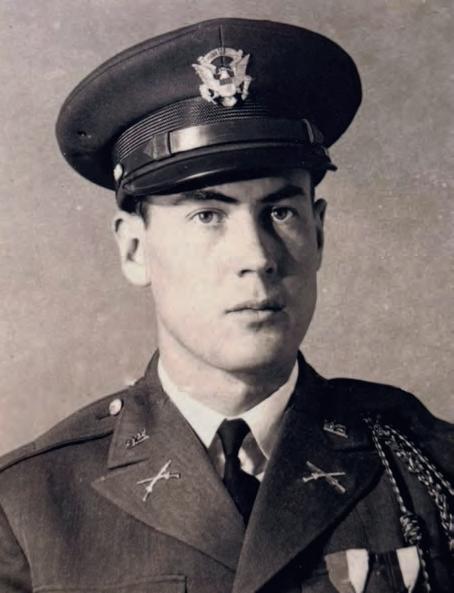
I sat among the soldiers for over an hour that afternoon. It was the peacefulness that kept me there, but made it so hard to part. I thought about the ferocity and chaos of war that overtook this exact spot, over 80 years ago, and how for these soldiers, even one moment of rest would have been inconceivable. Yet I had the privilege to stay, listening to the birds’ song and wind against the leaves.
My heart ached to have to leave my uncle so soon, and equally, to have to leave each soldier without acknowledging their name and sitting with them, too.
“Although,” I thought, “what a privilege I have to choose to leave.”
As I walked Omaha Beach and collected the red, white and blue stones, which providentially appear
In these unassuming moments, I came to understand the tangible endurance of Uncle Lem’s sacrifice. More than a display of gray ink, Uncle Lem endures in the building of sandcastles by children. More than a wooden chest full of faded artifacts, Uncle Lem is found in the restored fields and forests of France, consisting of songbirds and delicate flowers. He left his Kentucky home to crumble so that cities could flourish instead. A fixed cross emboldened a moving heart by its price of life, and accompanying grief is
the gift of freedom, thanks to his ultimate sacrifice. While time inevitably fades the objects and photos we have of Uncle Lem, it is with time that his impact, and the impact of thousands of other soldiers, reaches further into our lives and impassions my spirit.


Skate culture is made up of baggy jeans, sneakers and slip-on shoes, but KRNL wanted to take that “skateboarding” look and elevate it. Adding touches of chunky jewelry and statement clothing pieces, while paying homage to the ‘90s and early 2000s, creating a shoot that recognizes skate culture. One that celebrates freedom, nonconformity, self-expression and breaking gender norms in its appearance.
WRITTEN BY
DEKLYN DESPAIN & LILLY KEITH
TO WATCH THIS SHOOT’S VIDEO, SCAN THE QR CODE ON PAGE 79.



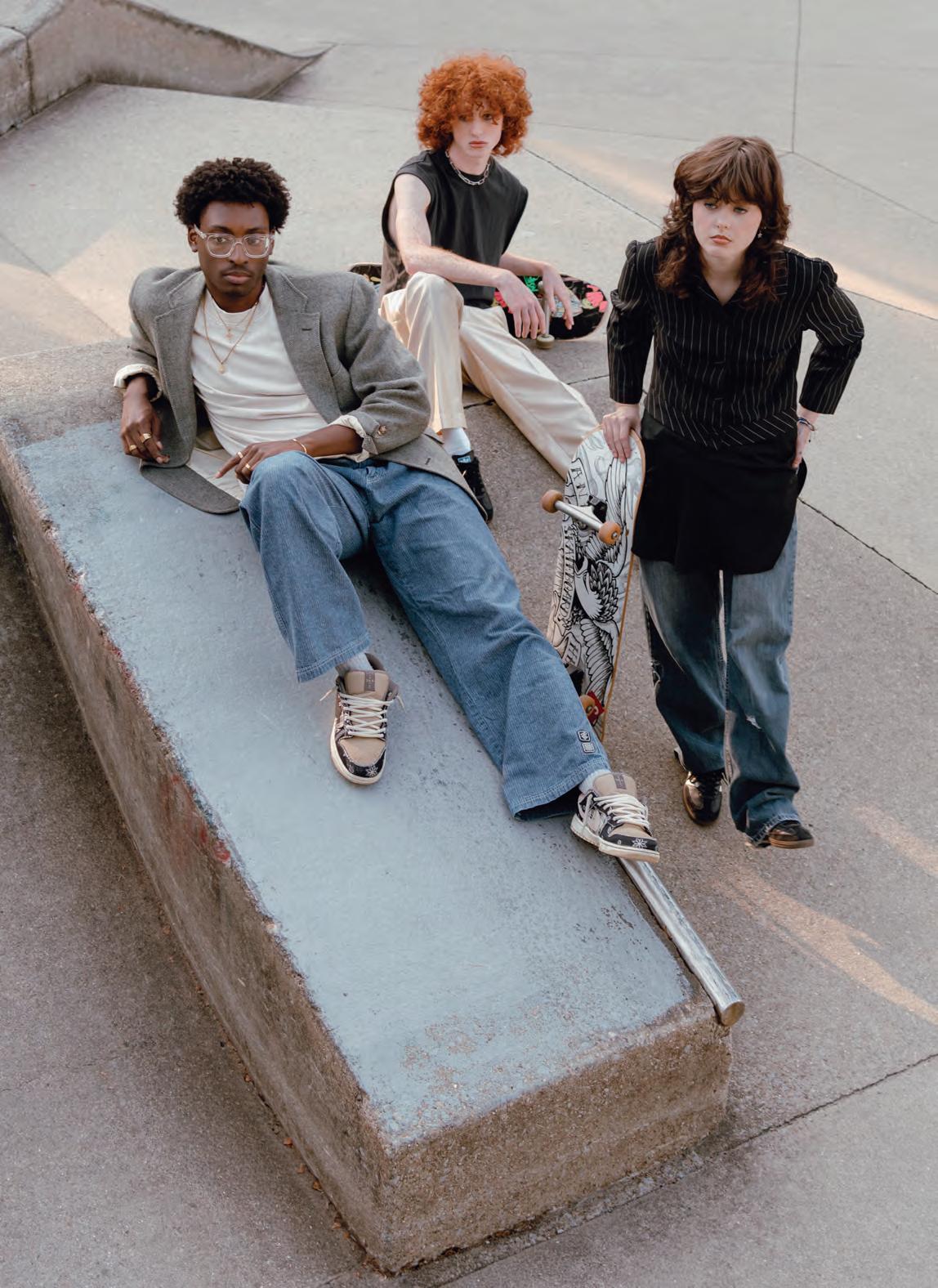





BY GIANNA MANCINI





before firing during practice on Friday, Aug. 29, 2025, in the basement of Barker Hall on UK’s campus in Lexington, Ky.
WRITTEN BY BROOKLYN AUTENRIETH | PHOTOS BY ELIZABETH HUNTER
With the cold aluminum butt of a 10-meter air rifle pressed to her cheek, Sofia Ceccarello is exactly where she feels best mentally and physically: the University of Kentucky rifle range.
Originally from Ravenna, Italy, she had picked up a rifle solely for the sport’s solitude at just 12 years old. Ceccarello and her mother searched for a sport that wasn’t dependent on a team.
“I wanted to try something different,” Ceccarello said. “I didn’t really like it that much at first. It was a good chance to try out an individual sport but still be around people.”
Her mother knew a few coaches in Ceccarello’s hometown, and quickly, sports shooting engulfed Ceccarello’s time and energy.
She dedicated countless hours to Olympic preparation and international competitions. She started winning medals in the International Shooting Sports Federation (ISSF) competition and made it to the 2021 Tokyo Olympic Games.
There she represented the Italian Police Team, or the Gruppo Sportivo Fiamme Oro, earning 10th in the women’s 10-meter air rifle.
“It was the moment where…all the effort that I put before was sort of worth it and everything,” Ceccarello said. “And I was 18, so it was kind of unreal at that time.”
Two short weeks after the intense pressure of the 2021 Olympics, Ceccarello’s plans to attend university in Italy felt too intense and hasty.
“I just accomplished something really big,” Ceccarello said. “The last thing I want to do now is to go to college.”
Ceccarello took a gap year and began touring universities in America, hoping to continue sports shooting collegiately.
“Making a decision on moving to the U.S. was something I was really excited about, but it was a big shock,” Ceccarello said.
Ceccarello knew the minute she met the rifle team on the University of Kentucky’s campus that, although she received the least amount of scholarship money from UK, Lexington was the place for her.
“There’s not a day that I regret the decision,” Ceccarello said.
“
I know I’m not the same person I was three years ago. I’m working to be the best self that I can be.”
- SOFIA CECCARELLO UK RIFLE TEAM MEMBER

She knew she was going to make whatever sacrifices were necessary for her to be a part of the University of Kentucky Rifle Team.
Ceccarello had to quickly grow accustomed to new practice plans, crowds of unfamiliar people and an abundance of mental hurdles.
“When I first came here, like three years ago now, shooting wise, that was probably one of the hardest times because everything was just so different,” Ceccarello said.
She found that even in times where she lost passion for the sport that brought her 4,876 miles from home, her teammates and coaches kept her grounded.
“Everyone in the [athletic] department is just so hardworking and caring about your experience, it just creates such a safe and comfortable space for me to just be who I am and develop my passions,” Ceccarello said.
It was the people within the athletic department that made one of Ceccarello’s favorite matches possible.
Although she has competed in a multitude of international competitions, the NCAA championship held in Historic Memorial Coliseum during her junior year is the match she said she remembers the most.
Ceccarello recalled the goosebumps that flooded over her skin as she looked upon the most impressive shooting range she had ever seen and had the privilege to shoot in.
“That was really exciting, just being able to have my people around and being able to feel so connected. I saw the job the staff made, and it was amazing. It was such a great atmosphere,” Ceccarello said.
Although she is dedicated to the physical aspects of sports shooting, she said that to best support her mental well-being, she needs to focus on multiple hobbies simultaneously.
“I’m a strong believer that if you’re just an athlete, I feel like you’re going to get burnout at that point, so I like to just keep two hobbies and two passions going pretty strong at the same time, because they give me balance,” Ceccarello said.
Her second passion is film, but after experiencing how easy it is to struggle in silence, Ceccarello took the opportunity through her internship with UK Sports Video to create an interview project centered around mental health.
“I wanted to use these skills that I have in creativity and storytelling to give the chance to other athletes to tell their own stories,” Ceccarello said. “To inspire people to ask for help or maybe make them feel like they aren’t alone.”
Defeating the stigma surrounding athletes’ mental health, she said, begins with managing her own. She works closely with a sports psychologist in Italy, connecting via Zoom once every few weeks, depending on match schedules and stress levels.
“When I understood that I couldn’t do everything by myself, and I started reaching out and talking to people about the struggle and the moment I grew up the most,” Ceccarello said.
Moving across the globe changed more than just her geographical location; it changed who she is in every aspect.
“I know I’m not the same person I was three years ago,” Ceccarello said. “I’m working to be the best self that I can be.”
“
I just accomplished something really big. The last thing I want to do now is to go to college,”
- SOFIA CECCARELLO UK RIFLE TEAM MEMBER

University of Kentucky rifle athlete Sofia Ceccarello fastens her elbow pad in between rounds of shooting practice on Friday, Aug. 29, 2025, in the basement of Barker Hall on UK’s campus in Lexington, Ky.
WRITTEN BY LENA BLESSING | PHOTOS BY HOLLY LONG

In-progress artwork lies on the ground of a garage turned studio. The floor is marked with splatters of color from previous projects, some of which are leaning up against the wall waiting to go to their new homes.
Wax stains cover Lexington artist Brian Connors Manke’s shorts and shirt, as he stands in front of shelves filled with his favorite medium and ultimate creative tool: crayons.
Connors Manke creates art on canvases by melting, drawing and painting with crayons. With artwork like “Time Is An Irrelevant Elephant That’s Benevolent,” Connors Manke mixes crayons with acrylic and even layers a vinyl record to create a unique, abstract and colorful piece.
This rhyming-named piece is just one of many you can find with Connors Manke’s signature medium. But despite making art for over 20 years, he does not call himself an artist.
“I don’t think I would define myself in the same way as big dealers and artists,” Connors Manke said. “I’m a creative person, right? But sometimes words can be tricky. Some people have an attachment to the word ‘artist’ that sometimes has a certain weight to it.”
He never believed he fit into the definition of a traditional artist. Like Connors Manke has done with his crayons on a canvas, he has melted together a definition for himself.
“I am an amateur in most everything I do. Granted, when I shipped a piece of art last week to Texas, it gets harder to say ‘Oh, well I am just an amateur, right?’ I am an amateur with professional moments perhaps,” Connors Manke said. “I like to be a walking contradiction.”
This viewpoint doesn’t just apply to his title; it also applies to the way he approaches creating his art by reaching for the nostalgic “discarded” tools of his past.
“I really love crayons as a medium, I always have.

“ I really love crayons as a medium, I always have. I love the idea that the first things we learned to use, mostly in kindergarten or as pre-K kids, was a box of crayons,”
- BRIAN CONNORS MANKE LEXINGTON ARTIST

I love the idea that the first things we learned to use, mostly in kindergarten or as pre-K kids, was a box of crayons,” Connors Manke said.“...But then, all of a sudden, we are just supposed to be done with them, right? We are supposed to move on to colored pencils or magic markers and leave the crayons in the dust. Why do we have to stop using them?”
That question was modeled after Connors Manke’s creative life trajectory. After his introduction to crayons as a kid, Connors Manke didn’t have many supported opportunities to continue exploring his creative side. Not with crayons, and eventually, not even with colored pencils and markers.
He took his last art class in elementary school and moved on to things like playing instruments and pursuing photography, instead.
It wasn’t until Connors Manke found an escape in coloring that those original tools made a reappearance in his day to day life.
“It’s soothing. It just takes me to a happy place,” Connors Manke said.
He began sharing that happy place with the world through his custom cards, a time when his “crayon life was still bubbling under the surface.”
“I would make my own greeting cards or funny cards. It’s so impersonal to have a card that somebody else made that says ‘Merry Christmas’ or ‘Happy
“I can spread some light through personal emotion or something I’ve experienced and have been wanting to share, or even just something larger that’s going on in the world,” Connors Manke said. “And because a lot of my art can be really abstract, you might not be able to exactly see it, but it can be very cathartic.”
Connors Manke said freedom came to mind when he thought about expressing himself through his crayon art.
“A return to crayons made me feel creative and free even when doing the smallest things. You get to choose what color you want to make the elephant, right? It can be pink, or it can be purple, or the tree can be silver if you want it to be,” Connors Manke said. “As you get older, you go into adulthood more and get more responsibility. Those freedoms are getting squeezed, so you reach for things that you found freedom in.”
Artistic freedom isn’t the only way that art has liberated Connors Manke. It has also freed him from the weight of other people’s opinions.
“I’m sure there were people out there who looked at it initially and were like, ‘That’s kind of dumb or weird,’ or whatever,” Connors Manke said. “And they can still think that, that’s fine.”
By focusing on what feels right, Connors Manke has embraced an innovative approach to creating.

WRITTEN BY CHASE MYERS | PHOTOS BY ELIZABETH HUNTER & CHRISTIAN KANTOSKY

Walk down any street in Lexington, Kentucky, and you’re bound to weave between farmers markets, gardeners in their front lawns and painters on park benches. This city is crawling with hobbies.
That’s all well and good, but as you pluck away at your interests, there’s a chance you’ll start asking for more.
Sure, jarring honey is riveting, but where’s my paycheck?
Well, in my pursuit to answer such

a question, I came upon four side hustlers that have transformed passions into respectable livelihoods.
These people took the plunge, proudly diving into their communities and using their energy to create, trade and serve.

There are days where artists wake up and drive their heads through a wall because they chose to be artists.
Perhaps that’s why my hairline is receding. No matter how frustrated, broke or in need of a drink we may be, we will never stop being artists.
Dalton Stanland, a freelance jazz musician, is living proof of that.
“When I look into the future, all I can see is music,” Stanland said to me with nervous enthusiasm, saxophone slung across his shoulder.
Stanland started where all Americans are born: McDonald’s.
After grease fumes and fryer alarms got to be too much, he decided he wanted something more.
“I’ve got a music degree. I needed to use it,” Stanland said.
Unlike many of the others featured in this article, he hopes to turn this gig into a full-time career: spreadsheets, websites and ad space are all a part of his daily routine.
“I’m kind of playing the business game right now, contacting venues and getting my name out there. It can be tedious work, and it definitely feels like a job at points, but it’s all
worth it if I can play music at the end of the day,” Stanland said.
When I saw him get on stage I saw nothing but a bold, free musician at the center of the room.
After the performance, I patted him on the back of his suit jacket and asked him where he’s heading next.
“Well,” Stanland said, bourbon in hand, “I’d like to one day make my own music. Albums and touring and what not. But I won’t get there unless I keep this up.”

Though the inner contents of your laptop would probably spark an intervention, nobody would know by glancing at the chaotic spread of graphics adorning the cover. Face it, we all love stickers.
Maggie Van Houten, otherwise known as MagnoliaMoonDraws, is no stranger to this phenomenon. In fact, she’s capitalizing off of it. In her high school days, as she sketched out comic strips on a rickety desk, Van Houten understood one thing: she needed to keep drawing.
After years of art school and empty ink cartridges, MagnoliaMoonDraws emerged.
“It started with commission drawings, mostly,” Van Houten


said. “I got a lot of commissions. Eventually I opened a Patreon, and I made monthly stickers for the members.”
Van Houten was very eager to share her work with me, throwing a mountain of stickers into my hands: foxes in scarves, cats in wizard hats. With each drawing I saw, it became extremely clear that she was putting a lot of herself into each piece.
“That’s the goal,” Van Houten said. “I want people to look at my art and say, ‘That’s Maggie. That’s absolutely Maggie.’”
That’s a respectable goal, but what makes Van Houten’s style recognizable is the pure fervor in every cat whisker and scarf stitch she draws.
“This is really just practice, you know, I just want to keep getting better. I want to keep making people happy with my art because that makes me happy too,” Van Houten said.
Such refreshing optimism, especially after working in kitchens where line cooks want to throw scalding oil in your face. Lost in her positivity, I forgot this was work for her, but the money, notoriety and struggle are second to it all.
“I know this can lead me anywhere; you can’t expect a straight path,” Van Houten said. “Art tends to be like that. For me, though, I just know I need to show up to my studio every day, draw something and keep moving forward.”

“People don’t realize that societies across the globe have been striking coins for thousands of years,” Marc Vazsonyi said to me, running his finger over a silver didrachm from Neapolis. “There’s so much culture and history to learn within it.”
Perhaps that’s not a popular sentiment. For many, coins are nothing more than a nuisance. In this economy, you’re better off eating your pennies than saving them. But for KentuckyCoins Marc, they’re miniature masterpieces.
Vazsonyi has been collecting coins since childhood, starting with pennies in between couch cushions and francs from his grandmother in Switzerland.
“It snowballed pretty quickly after that. In eighth grade, I joined


some coin circles, and it introduced me to a huge community. I must have gained twenty friendships through it,” Vazsonyi said.
With a huge smile on his face, he spoke of trade shows in Florida, conventions and grading processes. Vazsonyi loved this community.
“I want to be as transparent as I can be when trading with people. I want to help them grow their collection.” Vazsonyi said. “I see them as friends, and friends keep things fun.”
Despite literally dealing in cold, hard cash, it was never about the money for him, a question I almost needn’t ask given his enthusiasm was practically blinding me.
“Hell, I’d barely call this a job,” Vazsonyi said. “I don’t do it for money. The most rewarding part will always be the people.”
He had twisted the “money is the root of all happiness” mantra into something so friendly, like a clown does a balloon animal.
I fished into my pocket, finding a quarter with George Washington side-eying me.
Could this really be the key to an entire world of friends and happiness? Maybe, but I would need a cooler coin. I sighed, completely overtaken by Vazsonyi’s passion.
“Well,” I said, “could you see yourself doing this as a full-time job?”
“Oh, no,” Vazsonyi said, “I think I want to do something much more impactful in the future.”
Needless to say, I walked out of the interview in desperate need of a character reevaluation, for his kindness was worth more than any coin he could have shown me.


Isaac Stevens, who goes by Feffle in the Smash community, has been playing Super Smash Bros. since he was old enough to hold a controller and hasn’t stopped for over a decade.
“I used to just play for fun,” he said to me as he threw my character off the stage, “Then one day, I went to fix my laptop. I had a Smash wallpaper, and the employee noticed it. He invited me to come play tournaments in Versailles.”
Stevens quickly discovered a love for this group and was able to make some serious cash if he won the tournaments.
“Yeah, I guess that’s kind of the problem. If you start overthinking, start worrying about the money, then you play worse. If you play worse, it stops being fun. If it stops being fun, it’s a job,” Stevens said.
It’s quite clear Stevens doesn’t overthink things, as I accompanied him to a tournament and watched as he demolished every single person there.

University of Kentucky graduate student Isaac Stevens plays Super Smash Bros. on his Nintendo Switch on Tuesday, Sept. 23, 2025, at the Esports Gaming Lounge in Lexington, Ky.
He was amazing. One of the best in the state, but he’s always shrugged off the praise.
“It’s really just a hobby,” Stevens said. “I like to have fun with the community, and if I make some money along the way, well, that’s great.”
His carefree nature was extremely captivating, especially when he’s controlling Mario to kick my character into orbit. It seemed
like such an obvious sentiment: who wants the stress of income to dominate your passions?
After our game, I set down the controller that might as well have been unplugged and asked him if he had any final thoughts.
“Well, I’d like to express my gratitude to the Lexington Smash community. They’ve been a big part of my life,” Stevens said. “Also, you really suck at this game.”
If there’s anything I’ve gleaned from these interviews, it’s that the discouraging circumstances of the corporate world have not snuffed out passion — hell, it’s one of the few things we continue to cling to despite it all.
Collect something, make something, play something. Surround yourself with thriving communities. Whatever draws your heart out of hiding and makes your entire body move with purpose is something you simply must do.
We all know that life is short, so why not put yourself into it while you have the chance?


Celebrating the end of their time in college, our seniors indulged in the charm and extravagance of a classic tea party. From floral tea sets and delicate lace fans to towers of macarons and petite sandwiches, every detail was designed to capture maximalism and heirloom-inspired elegance. Pearls, florals and intricate jewelry added a touch of femininity, creating a whimsical, imitate and charming atmosphere for the afternoon.
WRITTEN BY DEKLYN DESPAIN & ALEXANDRIA LANDGRAF
TO WATCH THIS SHOOT’S VIDEO, SCAN THE QR CODE ON PAGE 79.

PHOTO BY LILY FOSTER











In July 2022, Eastern Kentucky faced a flooding that killed 46 people. Three years later, in February 2025, a flood from the North Fork Kentucky River hit the town of Hazard, causing businesses to be displaced, and some the inability to reopen.
With help from the community, businesses in Hazard have been on the path to recovery, shining a light on the resilience, strength and loyalty that remain.
WRITTEN BY ZAIDA BELL-FRANTZ & LILLY KEITH

Sandra Hurt stands in what has been her life for the past two years. The carpet of her business has been pulled up from the floor, the bare wood exposed. Four inches of drywall and insulation have been ripped away. The shelves are sprinkled throughout the floor no longer holding merchandise.
Quilts no longer hang on the walls. The remainder of the pale blue and white empty walls shine in the afternoon sun. Fans and dehumidifiers sit strewn across the building. Tools for quilt-making lie broken around the store.
“If I smile, I can’t cry about it,” Hurt said as she surveyed her surroundings with a smile on her face.
Hurt’s business, Appalachian Quilt & Craft, was nearly 4 inches deep in water when the worst of the flooding hit. Hurt is a co-owner of the business alongside her sister, Sheridan Sparkman.
With the help of their community, Hurt has picked up the pieces of their store and sewn them back together.
“I really love the work. I loved working there, and the community was so behind it, and we had so many people come in, and they were like, ‘This place has saved my life,’” Hurt said. “‘I had nothing to do,’ ‘I’ve retired,’ ‘This is my happy place.’ We’ve had so many people say that to us.”
The support from her regulars and her community is ever-flowing and indisputable, with everyone who can
pitch in offering support.
“We’re so thankful, we could never have cleaned it out on our own,” Hurt said. “It’s just people driving down the road that saw us working have stopped, people we don’t know, people we’ll probably never see again.”
Members of the community took some of the fabric damaged by the flood waters and then washed and dried it for Hurt, some even ironing it before returning it.
“Probably at one point, when it first happened, we probably had 20 people in the store,” Hurt said. “Then all of our customers have come in...I mean, hours and hours.”
Hurt estimated that they helped restore about 500 bolts of fabric after the flood damage, one bolt equaling 12 to 15 yards.
Despite cleaning the building that flooded, Hurt had to move her business to another area in Hazard after the original landlords doubled her rent.
Today, walking into Appalachian Quilt & Craft, the love and joy shared amongst quilters in the room is seen in conversations between Hurt and customers. Colorful quilts adorn the walls now, creating a backdrop for customers and aspiring quilters to grow their crafting together.

When the river crested in February, Shannon and Randy Gabbard, co-owners of Coal Country Candles, sat in their Hazard home, watching the news and hoping their downtown shop would be spared.
“We ended up with 34 inches of water in the store, so it was pretty devastating. You know, even though we thought we had prepared, we had not prepared,” Shannon said.
The Gabbards had experienced flood damage twice, just minutes away at the store’s original location, and thought they knew what to expect when the floodwaters receded. Their new shop, however, which had just celebrated its grand opening in August of 2024, was gutted in a matter of hours.
“ We ended up with 34 inches of water in the store, so it was pretty devastating. You know even though we thought we had prepared, we had not prepared,”
- SHANNON GABBARD CO-OWNER OF COAL COUNTRY CANDLES
“We felt like we had just got the bulk of the work done that needed to be done,” Shannon said. “And then we started all over.”
The morning after the floodwaters receded, Randy went and bought boots from the local Walmart and picked up a squeegee.
“I felt like I pushed 10,000 pounds of mud out of here,” Randy said.
But they weren’t alone. Within hours, neighbors and strangers alike appeared at their door ready and willing to help. Volunteers ripped out drywall, hauled away debris and Shannon said some even bought cleaning supplies straight from the couple’s Amazon wishlist.
Without flood insurance, the Gabbards relied on local organizations and national grants to help rebuild. The Foundation for Appalachian Kentucky provided Coal Country Candles with a grant to help replace basic items needed for the shop, and American Express
also awarded Coal Country Candles a $10,000 grant from their Main Street America USA program for disaster recovery, according to Shannon.
Despite the help, the recovery has been grueling. “Its been a little bit frustrating the building that we’re in, of course, the entire building flooded,” Shannon said. “We are the only business that has returned and opened back up in this building, and so that’s made it a bit of a challenge just to make sure people know that ‘Hey, we’re still there. We’re still open.’”
The pair is learning to balance their caution with hope. Randy still thinks about how the $3,500 melter he purchased, just two weeks before the floodwaters, came within inches of destruction. For now, they’re looking forward to a grand reopening later in the year.
“I cannot imagine, if we had not had the volunteers and the community and the help, we probably would have said, ‘We just can’t do this,’” Shannon said. “We’re extremely thankful for all the helping hands.”
The day of the flooding, Stephanie Callahan knew everything needed to be moved out of her store before the water hit. After waiting four hours for a U-Haul, that she never got, she moved everything to what people thought would be a safer location.
The water filled the “safer” side of the building in 20 minutes.
Callahan has owned Hot Mess Express 606, a clothing store with a men and women’s department, for almost four years. When she first moved to that building, a customer warned her that if she ever saw the manhole located outside the store bubbling, she needed to move.
“That day, you can ask everybody here, it bubbled all day long. It looked like a water leak,” Callahan said. “Well, now we know what it was. The drains were backing up, and the water was coming up in it.”
Within about an hour and a half, they had almost 5
“Hazard is family. It’s hard to understand if you’ve never lived here….This place is magic.”
- STEPHANIE CALLAHAN OWNER OF HOT MESS EXPRESS 606
feet of water in the men’s store, eventually trickling into the women’s store later that night. About 80% of stock in both stores was lost.
Callahan came in the next morning after some of the water receded to start throwing stock away.
“It’s like everybody in two counties showed up here to try to start whatever we could do,” Callahan said.
Callahan said the football team from a local high school and some of the cheerleaders came to help that day, with about 30 people in each building just trying to help clean up.
“The community is amazing. This place is little, but it’s mighty,” Callahan said. “It’s kind of magical, you know?”
Despite the progress and recovery the storefront had made over four months, Callahan wasn’t out of the woods yet.
Hot Mess was robbed on March 17, just two days after their re-opening. They never found out who had broken in.
Callahan estimated they stole about $20,000 worth of merchandise from her store.
Once again, the community helped Callahan get the store back on its feet. She received donations from different organizations, including the church she attends.
“Hazard is family,” Callahan said. “It’s hard to understand if you’ve never lived here.”


Ariana Rodriguez trades in her pagaent gowns for a blazer and tie on Monday, Sept. 29, 2025, in Lexington, Ky. to symbolize her barrier-breaking win as Miss Kentucky.
“Your new Miss Kentucky is…”
A moment of heavy silence.
Head down, all 20-year-old Ariana Rodriguez can see is her trembling hands intertwined with her fellow finalist’s and the stage lights reflecting off the golden gemstones covering her satin gown.
“Ariana Rodriguez, Bardstown!” the announcer said.
Cheers erupt from all around her. In a whirlwind, she’s being hugged by other contestants as she mouths “Oh my gosh,” the tears already beginning to fall. A sash is draped over her shoulder and a silver crown is placed atop her head. She repeatedly touches it in disbelief.
“I blacked out, I was just in shock,” Rodriguez said.
This was a moment Rodriguez said she never would have imagined possible when she was 12 years old and placed in
foster care, or when she was 16 and homeless, living out of her car.
Rodriguez was not always a pageant queen. The first foster care alum to win Miss Kentucky, she grew up in poverty, with a mother addicted to drugs and an abusive stepfather.
Fighting addiction, her mother struggled to show up as a parent for Rodriguez and her two siblings. Rodriguez said she spent the majority of her childhood in and out of around 12 different kinship homes, where kids unable to live with their parents are placed with close relatives or friends.
Kinship care was not sustainable long-term, though. Rodriguez said that her kinship caretakers were not paid and had to go through the court system, so not everyone was willing to help.
“Kinship care, even if they are relatives…it just feels like you’re a burden all the time because you’re in someone else’s home,” Rodriguez said. “I knew they weren’t getting financial support, so I kind of felt bad in that sense, like I was taking away from their other kids.”
Rodriguez frequently lived with her grandma, but she had to take out loans to put food on the table for them. Around Rodriguez’s 12th birthday, her family had run out of options, and she said she and her brother were no longer safe living with their mother and stepfather.
“My sister’s dad was abusing my brother and I. The court ordered that we needed to be taken out of the home due to neglect in the home,” Rodriguez said.
She was placed in the foster care system. Rodriguez was handed a trash bag to put her belongings in, moved into a stranger’s home and told she was “one of the lucky ones.”
She didn’t feel lucky. She felt voiceless.
“The system doesn’t listen to kids. I was in foster care and kinship care combined for like, the majority of my life. I think, up to 14 years, I’ve been in the court system,” Rodriguez said. “I only talked to a judge once. Nobody asked me ever, like, ‘What do you think we should do?’ They don’t ask the kids, yet they’re making decisions about the kids’ lives.”
After nearly two years in foster care, Rodriguez was reunified with her mother, who was no longer living with her former stepfather. However, her mother wasn’t necessarily living in conditions suitable for children, either.
“We lived out of an abandoned house. It was my mom, my brother and my sister. My mom was working all the time, but it just wasn’t enough,” Rodriguez said. “With her trying to take care of three kids and a puppy, it just wasn’t enough money. And so we were just homeless my entire eighth grade year.”
The whole time they lived in the abandoned house, she said her family had no access to heat, water, air conditioning or electricity. She got out as soon as she could.
At 16, faced with circumstances that limited her education and the future she wanted to build, Rodriguez made the decision to begin living out of the car she bought from her mother.
“I had made a promise prior to my brother and sister saying that I wouldn’t put them in the foster care system again, so I could have reached out for help, but that is why I chose not to,” Rodriguez said.
Rodriguez went to school during the day and worked a part-time fast food job on evenings and weekends to save up for college, like many other juniors and seniors at Thomas Nelson High School. But unlike them, she had nowhere to go home each evening, either parking her car at the Nelson County Fairgrounds to sleep or staying with friends when possible.
Needing to depend on others often weighed on her relationships, and she said she lost some friends after conflicts arose from living with them, making her feel even more isolated.

So I just remember trying to pull down my mirror. I just kept looking at myself like, ‘You’re not gonna be another statistic. You’re gonna get through it.’ And that’s the only reason I’m here,”
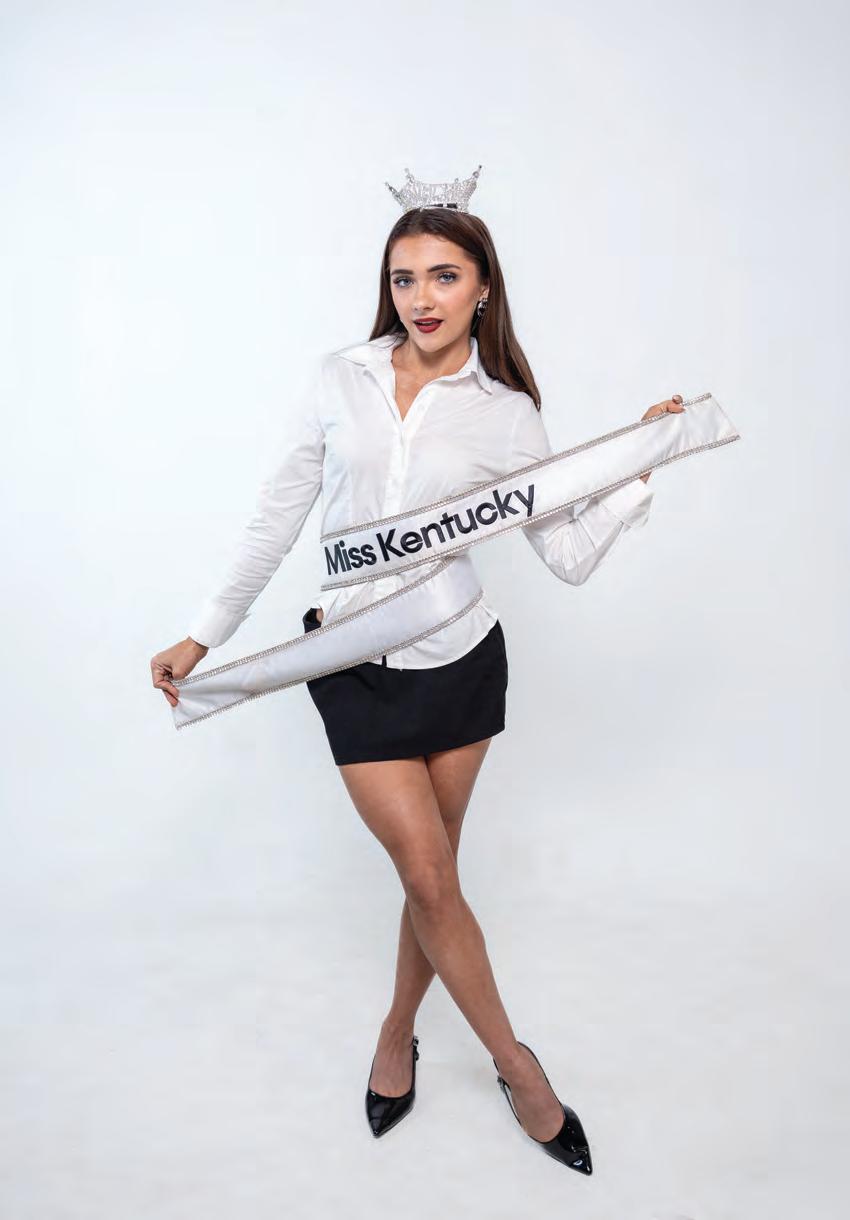

“I’d already been pretty much abandoned by any family I’d had, and so I really relied on my friends,” Rodriguez said. “So to literally have nothing and have that one thing that I did have taken away from me, and it being out of my control, was just so difficult.”
She recalled a moment of breakdown that marked a turning point in her life.
“I vividly remember going in my car and just like, punching my steering wheel. I was so mad, and I just started crying. I was like, ‘I’m just giving up. None of this is worth it. I’ve tried everything,’” Rodriguez said. “So I just remember trying to pull down my mirror. I just kept looking at myself like, ‘You’re not gonna be another statistic. You’re gonna get through it.’ And that’s the only reason I’m here.”
From then on, Rodriguez repeated this mantra of self-preservation nearly every day. Even with statistics like “3% of foster alumni will complete a bachelor’s degree” echoing in her mind, Rodriguez held onto the enduring belief that she was meant for more than what was expected of her.
“It was one of the best and worst times in my life, because I realized I couldn’t rely on other people or other tangible things for happiness,” Rodriguez said. “It’s a cliche, but you can choose to be happy. And so at that point in my life, I realized, you know, I can make myself happy. Despite my circumstances, I can still do things that I love. If I have no money, if I have no family or friends, like, all I have is my car and my dreams.”
Rodriguez thought about the thing she’d loved to do her whole life — singing — and how she could use it to make her dream of reforming the foster care system come true. In 2023, during her senior year, she searched online for talent competitions, hoping to win some money to pay for college.
She came across the Miss My Old Kentucky Home Scholarship Competition, a preliminary competition to Miss Kentucky. She said she spent all of the money she had saved for college on the entry fee and buying a dress.
“I was like, OK, I’m gonna go to Miss Kentucky’s Teen, and I’m gonna win, and then I’m gonna go to Miss America’s Teen and all my debt for college will be paid!” Rodriguez said. “I had clothes that didn’t fit me. I had no idea what I was doing.”
She lost. Discouraged, she walked off stage crying. The pageant director came up to her to see what was wrong.
“I told her the whole story, and we sat down and talked, and she was like, ‘If you want to go to Miss Kentucky’s Teen, we’re gonna get you there,’” Rodriguez said.
The two worked together to create a fundraising page that shared Rodriguez’s story, gaining enough traction to fund pageant training and more competitions.
Rodriguez said she has since earned thousands of dollars from the Miss America organization, winning Miss Bardstown in 2024 and Miss Kentucky in June 2025. She is now on track to graduate debt-free from the University of Kentucky, majoring in psychology and social work.
In February 2024, she was able to officially start her nonprofit, the Lucky Ones Foundation, at UK — something she’d envisioned since age 12.
The Lucky Ones offers support and resources to youth in foster care in Kentucky, spreads awareness of some of the system’s shortcomings and amplifies the voices of alum. Rodriguez said they provide suitcases, prom dresses, birthday and Christmas gifts, driving lessons and more to foster youth.
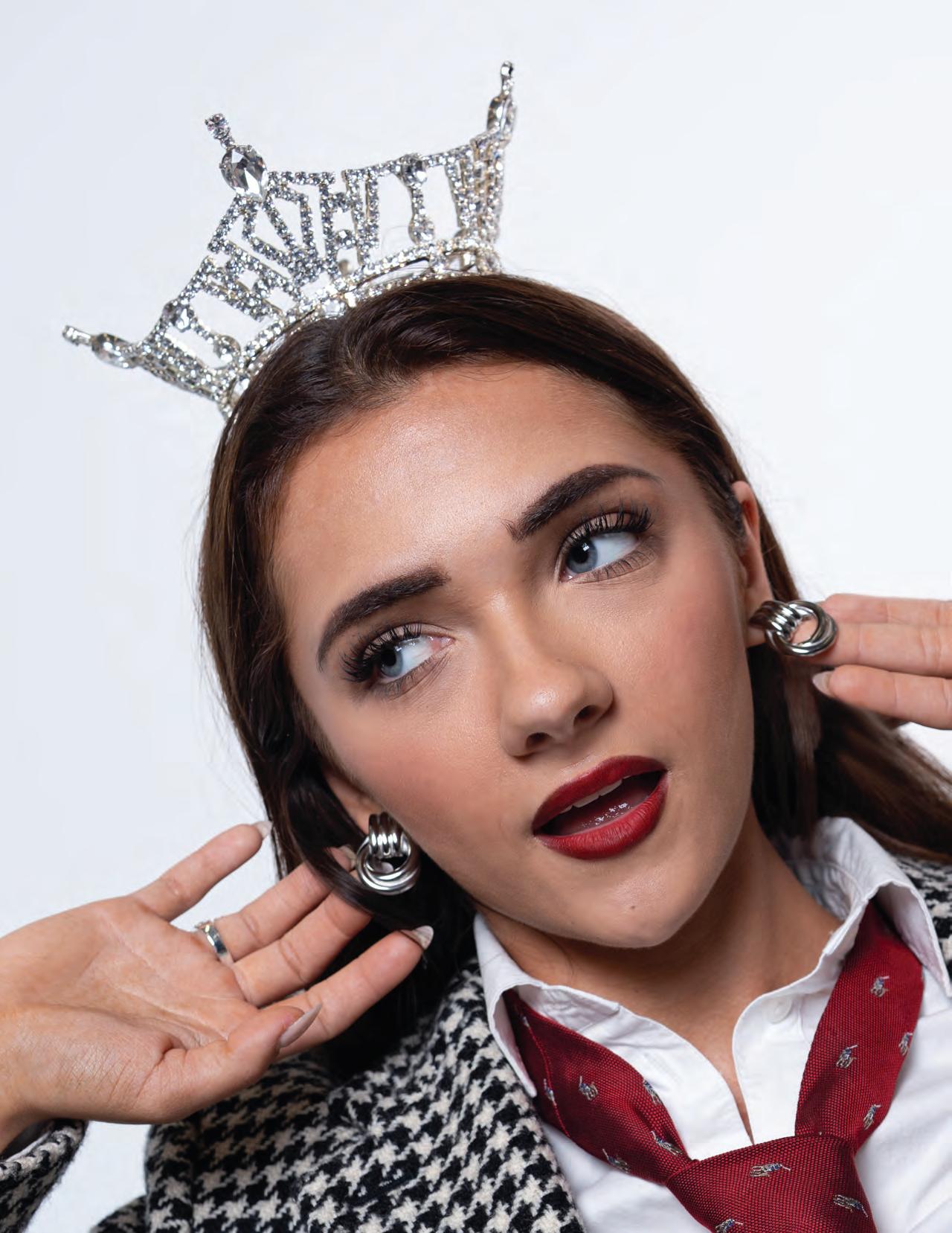

The nonprofit also helps foster youth transition to adulthood with an online series teaching them how to do laundry, change a tire and other useful life skills.
“You’re not taught life skills when you’re in foster care. You’re not told how to do your taxes, or how to apply for college or, even like simple things, like how to manage your emotions, how to shave your legs,” Rodriguez said. “Because typically, I feel like foster parents think that, ‘Oh, the last person taught them that,’ and then it just kind of goes untaught.”
Rodriguez also hosts The Lucky Ones podcast, where foster care alum can share their experiences. Winning Miss Kentucky has grown her platform significantly, bringing more attention to her mission and allowing Rodriguez to dream even bigger.
“My overall goal is to run an independent living facility for kids who age out of school,” Rodriguez said. “We actually found someone who said that he was willing to fund the housing for that, so we would be able to build houses for kids who age out of foster care. I would run it as a transition period between foster care and real life.”
For now, though, she needs to focus on being Miss Kentucky, and that’s no small task. But nothing feels better than knowing what holding this title means to other foster kids.
“That’s been my favorite part, is just you have a national stage to not only wear the crown and sash, but to represent the things that you care about,” Rodriguez said. “This little girl, she came up to me, and she’s in foster care and she said, ‘I’m so glad you won. I didn’t know people like us could do things like that.’ I literally just started bawling. It was so sweet.”
Sharing her story with the world has been deeply vulnerable for Rodriguez and her family. She said she’s gotten a lot of hate, including people accusing her of fabricating her past or claiming she only won Miss Kentucky because of it.
“Mostly I just laugh because, I mean, I’ve went through much worse than people telling me that I can’t do something my entire life,” Rodriguez said.
For most of her life, Rodriguez said she didn’t feel like one of the lucky ones, so she stopped waiting around for luck and made her own.
“This is my mission, and if I don’t fix it, nobody else is going to,” Rodriguez said. “So if people make fun of me, that’s fine. Because if I were to just be able to help one person, I think it would be all worth it.”
“ TO WATCH THIS STORY’S VIDEO, SCAN THE QR CODE ON PAGE 79.

This little girl, she came up to me, and she’s in foster care and she said, ‘I’m so glad you won. I didn’t know people like us could do things like that,’”
A photo series that captures the essence of girl roommates.
Going into college is the first time many of us find ourselves with a “roommate.” But for many, these roommates can start friendships that last longer than the leases we sign. Lily Foster, KRNL’s photo editor, was inspired by her own house filled with roommates that make it home. Foster said she aimed to capture female roommates, or “girlmates” in their natural dynamics and spaces, from sisters to women in a senior living community. Stepping into these different homes, she couldn’t help but notice the bonds shared between females who live together.
“I hope this series shares a little insight into what it means to be ‘girlmates,’” Foster said.
WRITTEN BY REAGHAN CHEN | PHOTOS BY LILY FOSTER



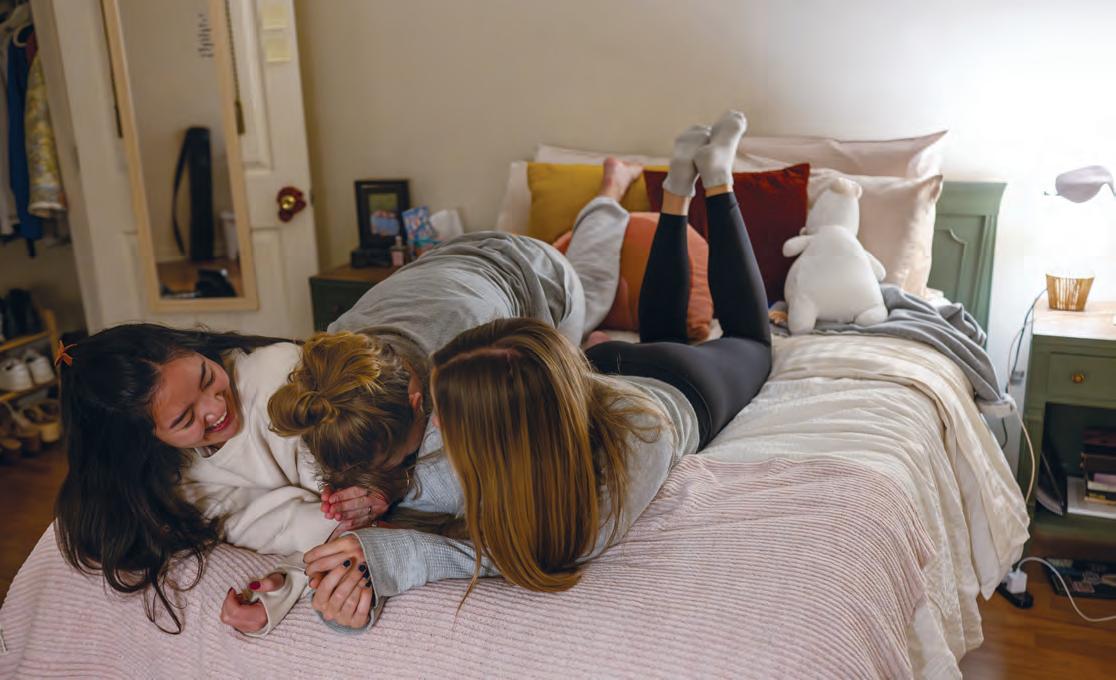
debrief their days as they get ready for bed Monday, Nov. 18, 2024, at their home in Lexington, Ky.






Popularized in the late ‘90s and early 2000s, Italian charm bracelets have started to become a trend again. From Italy to Etsy, these charm bracelets can be customized to fit your individual hobbies, metal and color preferences and overall style.
Jewelry doesn’t just have to be gold, silver or rose gold it can be colorful too. Color is a great way to tailor your jewelry to an outfit or occasion. Matching pops of color in your jewelry to accessories, such as purses and shoes, can help you create a cohesive look.
These rings speak for themselves. Statement rings are a great way to spice up your everyday jewelry stack. Whether you’re elevating an outfit or just want to try something new, these rings are an easy way to make a bold jewelry statement.



PHOTOS BY LILY FOSTER
You may have never thought about turning silverware into jewelry, but these tarnish-resistant jewelry pieces have gained popularity for their textures and distinctive features. Spoon rings may seem simple to make, but finding ones already cut, sanded and shaped is what most people opt for.
The idea that you can only wear one metal, from earrings to bracelets to your belt buckle, is long gone. Now, people are mixing their metals more than ever, embracing the freedom to buy jewelry — independent of the type of metal.
Despite the rise of electronic watches such as Apple Watches, analog watches kill two birds with one stone the ability to tell the time and express your style on your wrist. From a parent’s jewelry box to antique stores, unique analog watches are everywhere, and sometimes, all they need is a new battery to get them ticking again.
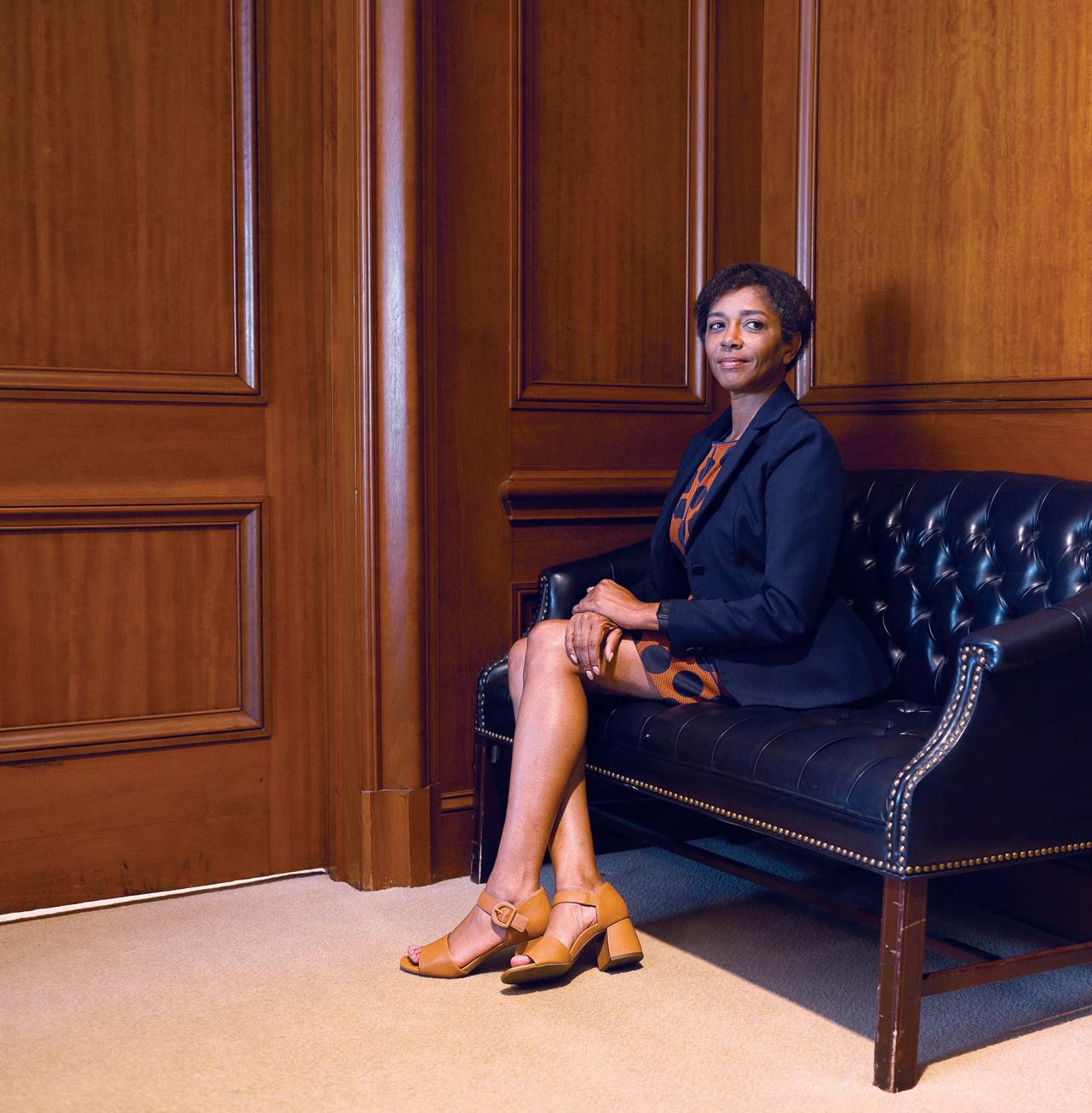
TPHOTO BY LILY FOSTER

The sound of construction echoed through the halls of the Kentucky State Capitol as La Tasha Buckner sat at her desk, surrounded by boxes.
The scene felt both chaotic and symbolic, a reminder of the constant motion that defines her life at the heart of state government. In the midst of it all, Buckner spoke calmly and with purpose, reflecting on the unlikely path that brought her to one of the most powerful positions in Kentucky.
“I would say, I would describe it as pretty serendipitous,” Buckner said. “I could not have planned my life to be here. I didn’t even know that where I’m currently working existed and a job like this existed.”
Buckner serves as chief of staff for Gov. Andy Beshear and senior counsel, a position that puts her at the center of policy, law and crisis management.
Originally a psychology major at the University of Kentucky, Buckner had her sights set on being a psychologist. However, during a year off for the graduate record examination, she began working for an attorney. This turned her interests toward the FBI and led her to pursue law school instead.
She began with an internship at the FBI headquarters in Washington, D.C. through the Honors Internship Program at the J. Edgar Hoover Building, an experience that initially thrilled her. But a hiring freeze shifted her plans.
Around the same time, she met her future husband, got married, had two children and realized the FBI wasn’t the right fit. So after law school, she unexpectedly moved into prosecution work in Kentucky.
Buckner said she felt a bit like “Goldilocks,” as in, one county was overwhelming with heavy caseloads, while another felt too quiet.
Her search for the right fit led her to Frankfort, where she worked at the labor cabinet and eventually discovered a passion for employment law.
“I didn’t know anything about employment law and really enjoyed it,” Buckner said. “That’s where you go in and someone may sue the cabinet or allege that they were mistreated, and you have to look at the case and decide, ‘OK, did management do something wrong and we need to make it better? Or did it not really happen and you have to protect the cabinet?’”
Her skill and persistence drew notice, and soon she was serving as General Counsel for the Department of Alcoholic Beverage Control and the Department of Charitable Gaming. The role expanded into Deputy Executive Director for the Office of Legal Services at the Public Protection Cabinet, where she was managing as many as 40 attorneys.
When Andy Beshear was elected attorney general in 2015, Buckner joined his team as assistant deputy attorney general for the civil division. While there, she argued some of the most notable cases in Kentucky history, including issues related to pension reform and budget cuts to the state’s public universities.
“When it came time that the governor ran and won being governor, he asked me to be his general counsel, which was very flattering and very cool but not totally unexpected,” Buckner said. “And then he wasn’t finding the right fit for a chief of staff, so he asked me to do that as well. I became the first person to hold both of those positions at the same time because either one of them is more than enough.”
Buckner is the first African American and the first woman to serve as chief of staff for the governor of Kentucky and the first African American woman to serve as general counsel for the governor’s office.
“I just kept hearing from other people, ‘There’s no way she can do it. No one can do both of those things,’” Buckner said. “And it just absolutely pumped me up to make sure that I could. And I did do it — for 10 months during COVID.”
She took on constitutional battles, environmental cases and lawsuits that shaped state policy. One of the most defining came during the COVID-19 pandemic, when she successfully argued before the Kentucky Supreme Court to uphold the governor’s emergency powers.
“
I just kept hearing from other people, ‘There’s no way she can do it. No one can do both of those things.’ And it just absolutely pumped me up to make sure that I could.”

- LA TASHA BUCKNER CHIEF OF STAFF FOR GOV. ANDY BESHEAR
“I went in and argued and won that case in front of the Kentucky Supreme Court — seven and zero,” Buckner said. “That was an awesome time because at that point having those restrictions in place absolutely saved lives… That was a defining moment in my legal career for sure.”
But, ultimately, she knew she needed to choose one position.
“For me the thing that made me want to switch to one job was really not the work,” Buckner said. ”It was feeling like I was letting down my legal team because I couldn’t be there with them as much.”
Deciding on chief of staff, Buckner has been on the front lines of some of Kentucky’s toughest emergencies. She’s spent countless hours in the state’s emergency operations center, responding quickly to disasters like the tornadoes in Western Kentucky — arriving within 30 minutes of the first reports — and the floods in Eastern Kentucky — showing up as soon as the waters receded and most rescues were complete.
“I learned I could stay up for about 38 hours straight,” Buckner said. “Knowing that we are having a frontline response…to make sure people are safe and getting the resources that they need — those things are more sad to be involved in but also a privilege to be involved in and try to help.”
Her work is often defined by crisis and high-stakes decision-making, but her identity and perspective are also shaped by her background. Growing up in the small town of Glasgow, Kentucky, Buckner recognized that her presence in future professional spaces as a Black woman would be rare.
“Obviously I’m aware that there aren’t as many people who look like me in the places I’ve found myself,” Buckner said. “But for me, that was

more of a motivation to make sure I always did really well in those spaces.”
The values Buckner learned at home, from her mother, who is deeply committed to volunteering, and her father, who worked in public service and modeled a life dedicated to helping others, have been a steady compass throughout her career.
“My mom’s thing was always, ‘If you’re on time, you’re late.’ And that’s something that’s been instilled with me, so I’m always early and ready to go unless there’s a really good reason not to be,” Buckner said.
Beyond her family, Buckner credits mentors with shaping her approach to law, leadership and resilience. One of her earliest influences was Phil Patton, who hired her as a secretary during a gap year between undergraduate and graduate school.
“The best part is I couldn’t type because I hadn’t taken keyboarding, and my handwriting was also really
bad,” Buckner said. “I was literally the worst secretary somebody could have. But he let me start going to court with him in one of the counties he prosecuted, and seeing what it takes to build a case was really, really interesting.”
That experience, coupled with Patton having attended UK law, inspired Buckner to apply to the University of Kentucky for law school, a path she might not have considered otherwise. The exposure to court and responsibility beyond typical secretarial work gave her an early understanding of the legal process and set the stage for her future career in law and state government.
Bob Vance, former secretary of the public protection cabinet, also played a pivotal role in connecting Buckner with opportunities that would shape her career.
“He was the person who asked me when he left from being cabinet secretary what I wanted to do, and I said, ‘If Andy Beshear becomes attorney general, I’d love to work for him.’ And he introduced us,” Buckner said. “That was really, that’s a turning point because otherwise I didn’t know the governor.”
A more recent key mentor was J. Michael Brown, who Buckner met at the office of the attorney general. He was the number two to Andy Beshear, and Buckner described him as a magnificent person that she went to for “a lot of guidance, a lot of wisdom and he had a lot of humor.”
But beyond her professional life, Buckner has created a sense of balance between family, friends and personal well-being that also shapes how she defines achievement.
“I have to say that I have been consistent about what success is to me. Success is feeling happy about where you are, which doesn’t mean every day is great or easy, but it means that I feel like I am working at my best level, and I’m doing things that matter to me,”
Buckner said. “So that’s always guided how I’ve chosen my career. I’ve never chased money — I’ve chased something that I thought I could make a difference in but also feel that I am being engaged.”
Buckner’s career has been defined by adaptability, a values-driven approach and a willingness to seize opportunities as they come. She has built a path not by clinging to rigid titles or expectations, but by focusing on what she enjoys, learning from every role and committing to doing what’s right. That openness has allowed her to serve Kentuckians and leave her mark on state government.
“We do so much every single day, and they all feel like small, good wins. You take them off and then you don’t even think about them again,” Buckner said. “I know there was something this week where I thought, ‘Oh, this is why I do this job.’ And it’s totally gone — because there’s just something else to do.”

WRITTEN BY DEKLYN DESPAIN & LILLY KEITH
TO WATCH THIS SHOOT’S VIDEO, SCAN THE QR CODE ON PAGE 79.
The peace of the lake at dawn, the stillness of the water and the casting of a line slowly sends out ripples. Earth tones, layers and weathered clothes were the center of this shoot. “On the Banks” utilized mossy green, khaki, browns and beiges — colors that are all reminiscent of the lake and its quiet mornings. Waders, trench coats, cable knit sweaters and waffle thermals blend the functionality of outdoor clothing with fashion, creating an almost catalog-like feel as you flip the pages.
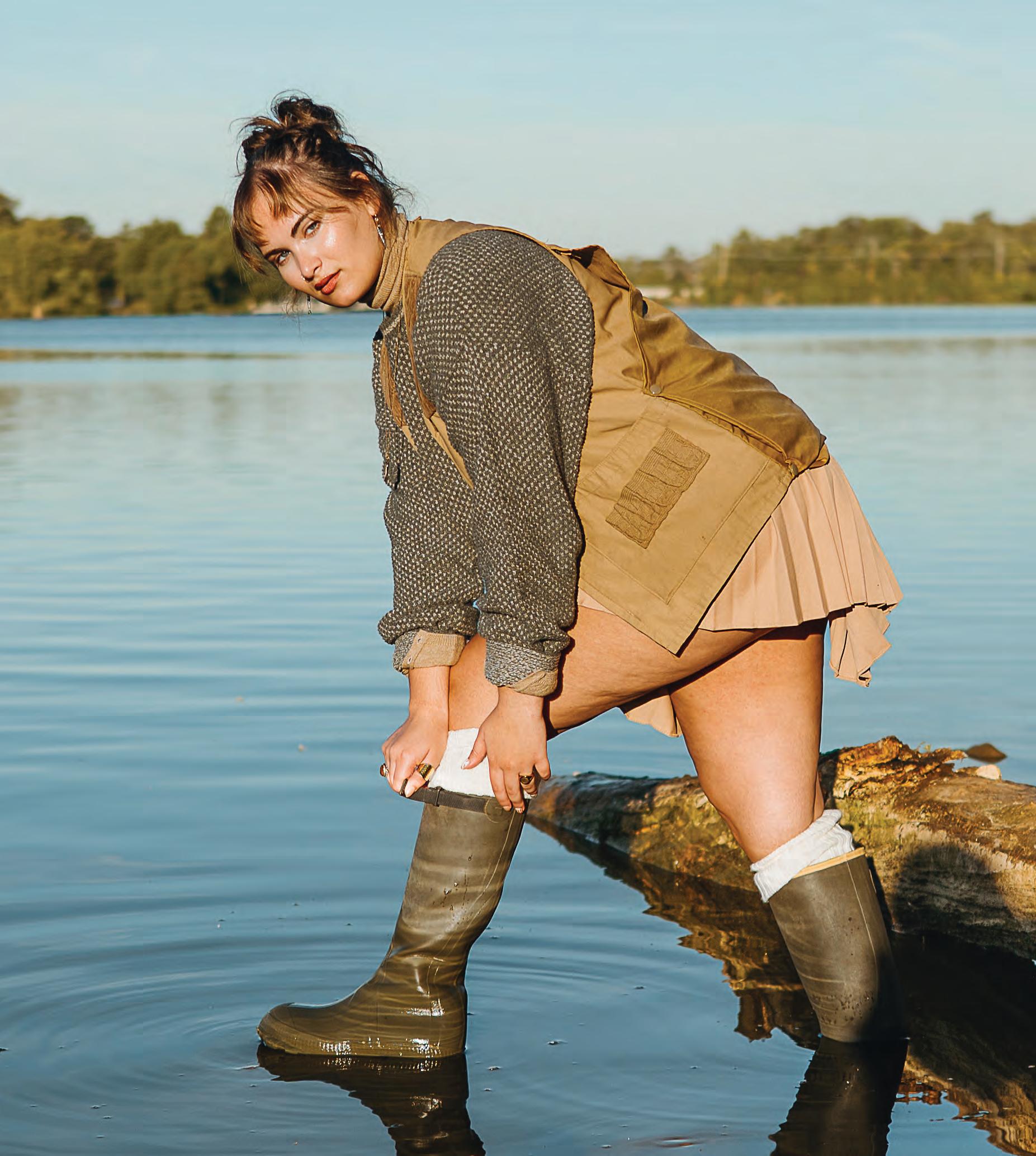
STREET SCENE
JEWELRY
SWEATER
VINTAGE THERAPY
SKIRT
TURTLENECK
VEST






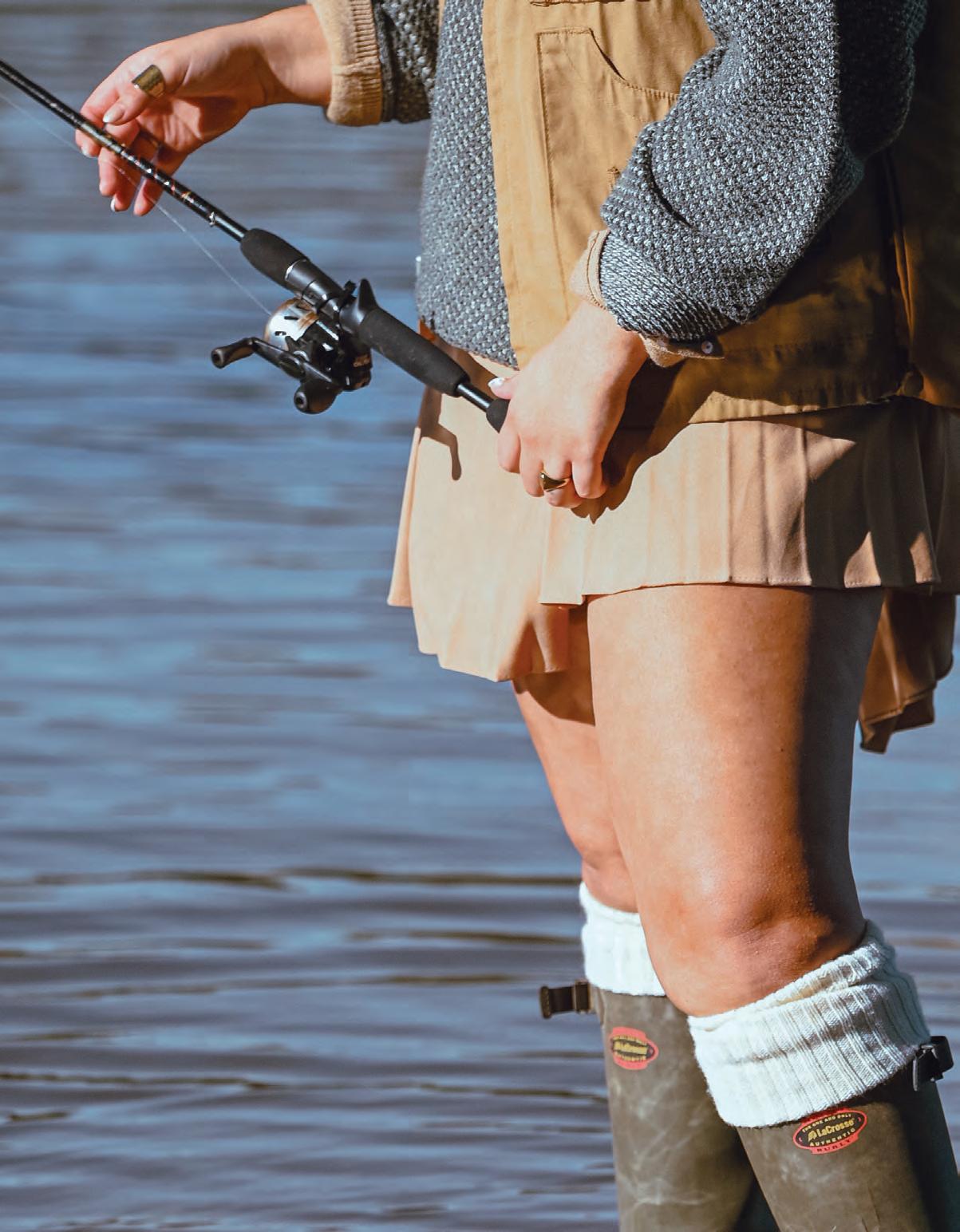

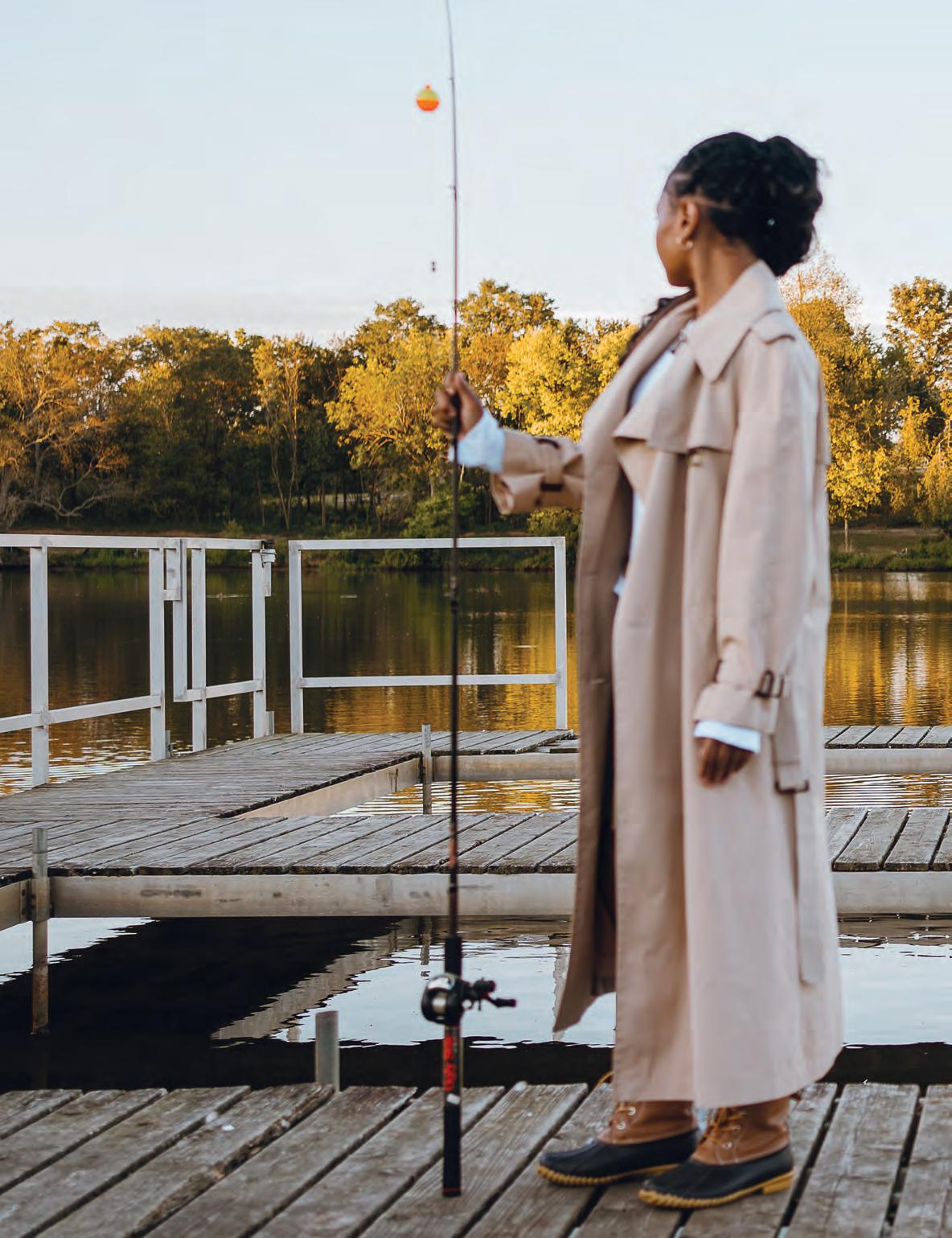




































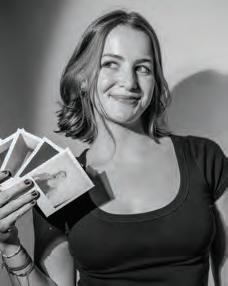
Outreach Coordinator
Sponsored Content


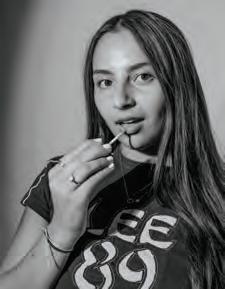

Brooklyn Autenreith, Lena Blessing, Aimee Pierce, Laurel Swanz, Elena Wright
Emma Johnson, Christian Kantosky, Holly Long, Gianna Mancini, Sydney Novack, Cara Raiford, Elizabeth Solie, Kate Thompson
Elaina Garrett
Anna Brillanti
Molly Smyth
Dakota Adams, MéShiya Bradshaw, Ella Brocker, Cameron Chappell, Kara French, Sarah Manske, Ashley Rennie, Owen Robinson, Ella Sutfin
Maria Bartmann, Lena Blessing, Vania Garcia, Meghan Jarboe, Grace Perkins, Maddi Pullen
Chloe Bradley, Lilly Buchanan, Serena Florell, Gracie Green, Maclane Roberson
2025 Organizational Pinnacle Awards
Feature Magazine of the Year
First Place
2025 Individual Pinnacle Awards
Best Investigative Story
KRNL Staff, First Place
Best Multimedia Sports Story
KRNL Staff, Third Place
Best Portrait
Lily Foster, First Place
Best Magazine Spread
Ashleigh Jones, Second Place
2024 Organizational Pinnacle Awards
Feature Magazine of the Year
Third Place
2024 Individual Pinnacle Awards
Best Investigative Sports Story
KRNL Staff, First Place
Best Vertical Short Video
Hayden Burn, Third Place
Best Sports Feature Photo
Sydney Turner, Second Place
2025 Individual Awards
Design of the Year: Magazine Page/Spread (Spring 2025 Issue)
Ashleigh Jones, First Place
Multimedia Story of the Year:
Multimedia News Story (Spring 2025 Issue)
KRNL Staff, Second Place
Broadcast Story of the Year: Broadcast Feature Story
Edward Smith, Second Place
Best Feature Writer
2024 Organizational Best of Show
Best Feature Magazine (Spring 2024 Issue)
Third Place
2024 Individual Best of Show
Best Environmental Portrait
Sydney Turner, Second Place
2023 Organizational Best of Show
Best Feature Magazine (Spring 2023 Issue)
Second Place
2024 Best of the South
Best Magazine
Reaghan Chen, First Place
KRNL Lifestyle & Fashion
Fall 2024 Issue, First Place
Best Magazine Writer
Carlee Hogsten, Second Place
KRNL SPONSORS
Kenwick Table 201 Owsley Ave Lexington, KY 40502
The Burl 369 Thompson Rd Lexington, KY 40508 (859)-447-8166
PHOTOSHOOT SPONSORS
Street Scene 2575 Regency Rd Lexington, KY 40503 (859)-260-1578
Instagram: @streetscenevintage
Vintage Therapy
101 W Loudon Ave Suite 178 Lexington, KY 40508 vintagetherapylex@gmail.com
Instagram: @vintagetherapy_lex
SHOOT LOCATIONS
Art of the Afternoon
Nannie Clay Wallis Arboretum
The Garden Club 616 Pleasant St Paris, KY 40361
Decked Out
Woodland Park 601 E High St Lexington, KY 40502
On the Banks
Jacobson Park 4001 Athens Boonesboro Rd Lexington, KY 40509
Art of the Afternoon
Emogene Bane
Zaida Bell-Frantz
Deklyn DeSpain
Landyn DeSpain
Elaina Garrett
Lily Patterson
Elizabeth Solie
Laurel Swanz
Decked Out
Klord Fernandez Cayetano
Riley O’Neill
Grayson Rice
On the Banks
Halle Anderson
Hunter Durkee
Emily Garlock
Watch Out!
Ashleigh Jones
Ashley Rennie
BEHIND THE SCENES
Ryan Craig
Bryce McNeil
David Stephenson
